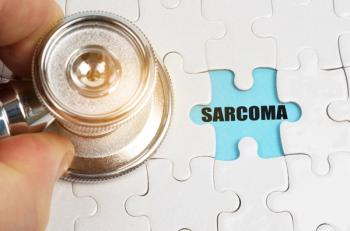
Dabigatran compared to warfarin when given to patients with atrial fibrillation
Dabigatran, a new oral direct thrombin inhibitor, given to patients with atrial fibrillation at a dose of 110 mg was associated with rates of stroke and systemic embolism that were similar to those associated with warfarin, as well as lower rates of major hemorrhage.
Key Points
Dabigatran, a new oral direct thrombin inhibitor, given to patients with atrial fibrillation at a dose of 110 mg was associated with rates of stroke and systemic embolism that were similar to those associated with warfarin, as well as lower rates of major hemorrhage, according to a recent study in The New England Journal of Medicine. In addition, researchers found that dabigatran given at a 150 mg dose was associated with lower rates of stroke and systemic embolism than warfarin, but had a similar rate of major hemorrhage.
There is a need to develop new anticoagulants that are safe, effective, and easy to use.
In this study, the Randomized Evaluation of Long-Term Anticoagulant Therapy (RE-LY), 18,113 patients in 44 countries worldwide with atrial fibrillation and a risk of stroke were randomly assigned to receive in a blinded fashion fixed doses of dabigatran-110 mg or 150 mg twice daily-or in an unblended fashion, adjusted-dose warfarin. Patients were included in the study if they had atrial fibrillation documented on electrocardiography performed at screening or within 6 months beforehand and at least one of the following characteristics: previous stroke or transient ischemic attack, a left ventricular ejection fraction of less than 40%, New York Heart Association class II or higher heart failure symptoms within 6 months before screening, and an age of at least 75 years or an age of 65 to 74 years plus diabetes mellitus, hypertension, or coronary artery disease. During the study, concomitant aspirin use (<100 mg per day) or other antiplatelet agents was permitted.
In the warfarin group, the rate of major bleeding was 3.36% per year, as compared with 2.71% per year in the 110 mg group (P=0.003) and 3.11% per year in the 150 mg group (P=0.31). Rates of life-threatening bleeding, intracranial bleeding, and major or minor bleeding for the 110 mg group were 1.22%, 0.23%, and 14.62%, respectively; for the 150 mg group it was 1.45%, 0.30%, and 16.42%, respectively; for the warfarin group it was 1.80%, 0.74%, and 18.15%, respectively (P<0.05 for all comparisons of dabigatran and warfarin). For those taking the 150 mg dose, there was a significantly higher rate of gastrointestinal bleeding than for those taking warfarin.
The mortality rate was 4.13% per year in the warfarin group, as compared with 3.75% per year in the 110 mg dabigatran group (P=0.13) and 3.64% per year in the 150 mg dabigatran group (P=0.051).
When the researchers compared the 110 mg dose of dabigatran to the 150 mg dose, they found the higher dose reduced the risk of stroke or systemic embolism (P=0.005). This difference is attributed mostly to a decrease in the rate of stroke with ischemic or unspecified cause, whereas rates of hemorrhagic stroke were similar in both dabigatran groups.
There was no significant difference with respect to causes of death-including vascular causes-between the two dabigatran groups. The 150 mg dose compared to the 110 mg dose was associated with a trend toward an increased risk of major bleeding (P=0.052), as well as increased risks of gastrointestinal, minor, and any bleeding. Dyspepsia was the only adverse effect that was significantly more common with dabigatran than with warfarin. Dyspepsia occurred in 707 patients (11.8%) and 688 patients (11.3%) of the 110 mg and 150 mg dabigatran groups, respectively; it occurred in 348 patients (5.5%) in the warfarin group (P<0.001 for both comparisons).
The researchers note that the risk of intracranial hemorrhage with both doses of dabigatran was less than one-third the rate of warfarin without a reduction in the efficacy against ischemic stroke.
They conclude that this suggests an important advantage of dabigatran over warfarin. In addition, because the net clinical outcome, which is a measure of the overall benefit and risk, was similar between the two doses of dabigatran, it may be possible to tailor the dose of the drug to take into consideration the risk characteristics of a particular patient.
SOURCE
Connolly SJ, Ezekowitz MD, Yusuf S, et al. Dabigatran versus warfarin in patients with atrial fibrillation. N Engl J Med. 2009;361:1139-1151.
Newsletter
Get the latest industry news, event updates, and more from Managed healthcare Executive.
















































